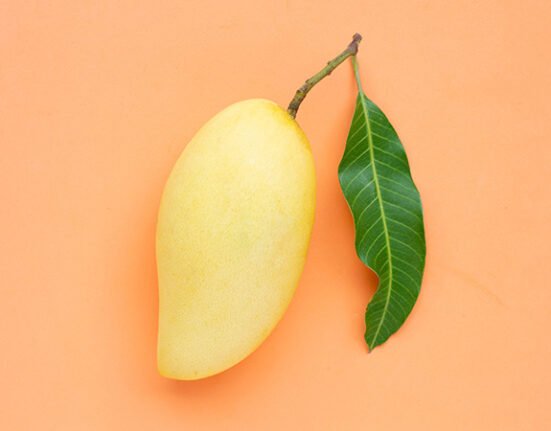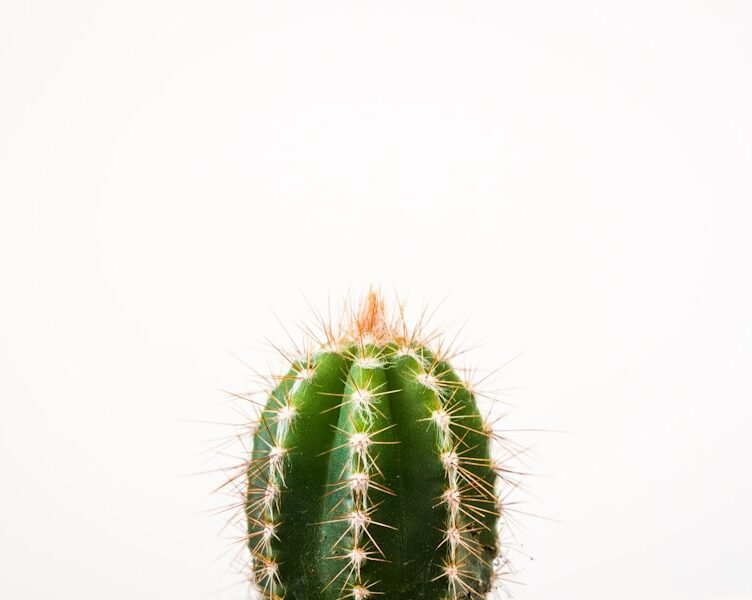Identifying and assessing dark spaces in your home requires an understanding of the specific conditions that define low-light environments. These areas are typically characterized by a lack of direct sunlight, often caused by factors such as small windows, north-facing rooms, or tall buildings that obstruct natural light. As a result, these spaces have limited access to sunlight, making it challenging for traditional houseplants to flourish.
To evaluate the light level in a particular area, a simple test known as the “shadow test” can be employed. By placing your hand in the area where you intend to grow plants and observing the intensity of the shadow it casts, you can determine the light level. A faint shadow with undefined edges indicates low light.
Alternatively, a light meter can be used to measure the amount of light in foot-candles or lux, providing a more accurate assessment of the light levels in a specific space. Accurately identifying and assessing low-light environments is crucial for successfully transforming dark spaces in your home. By understanding the specific conditions that define these areas, you can select the right low-light indoor plants and provide them with the necessary care to thrive in dimly lit spaces.
Key Takeaways
- Understanding low-light environments is crucial for identifying and assessing dark spaces in your home.
- Selecting the right low-light indoor plants involves a comprehensive guide to species and varieties that thrive in dimly lit areas.
- Caring for low-light indoor plants requires tips and techniques to ensure healthy growth and development.
- Creative ways to display low-light indoor plants can incorporate stylish ideas for bringing greenery into dimly lit spaces.
- Troubleshooting common issues is essential for addressing challenges and maintaining the health of low-light indoor plants.
Selecting the Right Low-Light Indoor Plants: A Comprehensive Guide to Species and Varieties
Popular Low-Light Plant Options
Ferns are a popular choice for low-light environments due to their ability to thrive in moist, shaded areas. They come in a variety of shapes and sizes, making them a versatile option for adding greenery to dark corners and spaces. Pothos, also known as devil’s ivy, is another excellent choice for low-light areas. This hardy plant is known for its trailing vines and heart-shaped leaves, making it a beautiful addition to any dimly lit room.
Additional Low-Light Plant Options
In addition to ferns and pothos, snake plants and peace lilies are also great options for low-light indoor plants. Snake plants are known for their striking upright leaves and ability to thrive in low-light conditions, while peace lilies are prized for their elegant white blooms and air-purifying qualities.
Creating a Lush Atmosphere
By selecting the right species and varieties of low-light indoor plants, you can create a lush and vibrant atmosphere in even the darkest areas of your home.
Caring for Low-Light Indoor Plants: Tips and Techniques for Ensuring Healthy Growth and Development
Caring for low-light indoor plants requires a different approach than caring for plants that thrive in bright, sunny conditions. In order to ensure healthy growth and development, it’s important to provide these plants with the right amount of water, nutrients, and environmental conditions. One of the key factors to consider when caring for low-light indoor plants is watering.
Since these plants receive less sunlight, they typically require less water than those in brighter environments. Overwatering can lead to root rot and other issues, so it’s important to allow the soil to dry out between waterings. In addition to proper watering, low-light indoor plants also benefit from regular fertilization.
Using a balanced, water-soluble fertilizer can help provide essential nutrients that may be lacking in low-light environments. It’s important to follow the instructions on the fertilizer packaging and avoid over-fertilizing, as this can lead to nutrient imbalances and damage to the plant. Another important aspect of caring for low-light indoor plants is providing them with the right environmental conditions.
While these plants can thrive in dimly lit spaces, it’s important to ensure that they are not exposed to drafts or extreme temperatures. By providing the right care and attention, you can ensure that your low-light indoor plants remain healthy and vibrant in even the darkest areas of your home.
Creative Ways to Display Low-Light Indoor Plants: Stylish Ideas for Incorporating Greenery into Dimly Lit Spaces
| Plant Name | Light Requirement | Watering Frequency | Growth Height |
|---|---|---|---|
| Snake Plant | Low to bright indirect light | Every 2-6 weeks | 2-4 feet |
| Pothos | Low to medium light | Every 1-2 weeks | 6-10 feet |
| ZZ Plant | Low to bright indirect light | Every 2-3 weeks | 2-3 feet |
| Peace Lily | Low to medium light | Every 1-2 weeks | 1-6 feet |
Incorporating low-light indoor plants into your home doesn’t have to be limited to traditional pots on the floor or tabletops. There are many creative ways to display these plants and incorporate greenery into dimly lit spaces, adding style and personality to your home decor. One stylish idea for displaying low-light indoor plants is to use hanging planters or macrame hangers.
These can be hung from ceilings or walls, adding visual interest and dimension to any room while allowing plants to receive the light they need. Another creative way to display low-light indoor plants is by using wall-mounted planters or shelves. These can be used to create vertical gardens or living walls, adding a touch of nature to any space while maximizing limited floor space.
Additionally, using decorative plant stands or pedestals can elevate low-light indoor plants and create a focal point in a room. If you’re looking for a more unconventional way to display low-light indoor plants, consider using terrariums or glass cloches. These enclosed containers can create a mini ecosystem for plants, adding a unique and eye-catching element to your home decor.
By thinking outside the box and exploring creative ways to display low-light indoor plants, you can bring life and greenery into even the darkest areas of your home.
Troubleshooting Common Issues: How to Address Challenges and Maintain the Health of Low-Light Indoor Plants
While low-light indoor plants are well-suited for dimly lit environments, they can still face challenges that may affect their health and growth. Common issues that may arise with low-light indoor plants include yellowing leaves, stunted growth, and pest infestations. It’s important to be proactive in addressing these challenges in order to maintain the health of your plants and ensure their long-term success.
One common issue with low-light indoor plants is yellowing leaves, which can be caused by overwatering, nutrient deficiencies, or inadequate light. If you notice yellowing leaves on your plants, it’s important to assess their care routine and make any necessary adjustments. This may include reducing watering frequency, providing supplemental lighting, or adjusting fertilization practices.
In addition to yellowing leaves, stunted growth can also be a common issue with low-light indoor plants. This may be caused by factors such as inadequate nutrients or root-bound conditions. To address stunted growth, consider repotting your plants into larger containers with fresh soil and providing them with a balanced fertilizer to promote healthy growth.
Pest infestations can also pose a challenge for low-light indoor plants, as they may be more susceptible to pests in dimly lit environments. Common pests that may affect these plants include spider mites, mealybugs, and aphids. If you notice signs of pest infestations on your plants, such as webbing or sticky residue on leaves, it’s important to take action promptly by using natural or chemical pest control methods.
By being proactive in addressing common issues and maintaining the health of your low-light indoor plants, you can ensure that they continue to thrive in even the darkest areas of your home.
Benefits of Low-Light Indoor Plants: Exploring the Positive Impact of Greenery in Dark Spaces
Improving Air Quality
One of the key benefits of low-light indoor plants is their ability to improve air quality by removing toxins and pollutants from the environment. Many species of low-light indoor plants are known for their air-purifying qualities, making them an effective way to enhance indoor air quality in dimly lit spaces.
Boosting Mental Health and Well-being
In addition to improving air quality, low-light indoor plants can also have a positive impact on mental health and well-being. Studies have shown that exposure to nature and greenery can reduce stress levels, improve mood, and increase productivity. By incorporating low-light indoor plants into dark spaces in your home, you can create a calming and rejuvenating atmosphere that promotes relaxation and overall well-being.
Connecting with Nature
Furthermore, low-light indoor plants can also help create a sense of connection with nature in urban environments or areas with limited access to outdoor green spaces. Bringing greenery into dimly lit areas of your home can help bridge the gap between indoor and outdoor environments, creating a more natural and inviting atmosphere. By exploring the positive impacts of low-light indoor plants, you can gain a deeper appreciation for their role in transforming dark spaces into vibrant and healthy environments.
Transforming Your Home with Low-Light Indoor Plants: Real-Life Success Stories and Inspirational Ideas for Bringing Life to Dimly Lit Areas
Real-life success stories and inspirational ideas for bringing life to dimly lit areas with low-light indoor plants can provide valuable insight and motivation for transforming your own home. Many homeowners have successfully incorporated low-light indoor plants into their dark spaces, creating lush and vibrant environments that enhance the overall atmosphere of their homes. One real-life success story involves a homeowner who transformed a dimly lit bathroom with the addition of low-light indoor plants such as ferns and snake plants.
By strategically placing these plants near windows and using hanging planters to maximize vertical space, the homeowner was able to create a lush oasis in an otherwise dark area of their home. Another inspirational idea for bringing life to dimly lit areas is by creating a dedicated plant corner or nook in a room with limited natural light. By using decorative plant stands or shelves, homeowners can showcase their collection of low-light indoor plants while adding visual interest and personality to their home decor.
Additionally, incorporating low-light indoor plants into office spaces or work areas can help create a more inviting and productive environment. Many professionals have successfully added greenery to their workspaces by using desktop planters or terrariums, bringing life and energy into dimly lit areas. By exploring real-life success stories and inspirational ideas for bringing life to dimly lit areas with low-light indoor plants, you can gain valuable inspiration for transforming your own home into a lush and vibrant oasis.
In conclusion, understanding how to identify and assess dark spaces in your home is crucial for successfully transforming these areas with low-light indoor plants. By selecting the right species and varieties of low-light indoor plants and providing them with proper care, you can create a lush and vibrant atmosphere in even the darkest areas of your home. Exploring creative ways to display these plants, troubleshooting common issues, and understanding their benefits can further enhance their impact on your home environment.
Real-life success stories and inspirational ideas provide valuable insight and motivation for bringing life to dimly lit areas with low-light indoor plants. By following this complete guide, you can effectively transform dark spaces in your home into thriving green oases that enhance both physical and mental well-being.
FAQs
What are low-light indoor plants?
Low-light indoor plants are plants that can thrive in environments with minimal natural light. These plants are able to adapt to low-light conditions and are suitable for indoor spaces with limited sunlight.
What are the benefits of low-light indoor plants?
Low-light indoor plants can help improve indoor air quality, reduce stress, and enhance the overall aesthetic of indoor spaces. They are also relatively low-maintenance and can thrive in areas where other plants may struggle.
What are some popular low-light indoor plants?
Some popular low-light indoor plants include snake plants, pothos, peace lilies, spider plants, and ZZ plants. These plants are known for their ability to thrive in low-light conditions and are commonly found in indoor spaces.
How do I care for low-light indoor plants?
Caring for low-light indoor plants involves providing the right amount of water, ensuring proper drainage, and occasionally fertilizing the plants. It’s also important to regularly dust the leaves and monitor for any signs of pests or diseases.
Can low-light indoor plants survive in windowless rooms?
Yes, many low-light indoor plants can survive in windowless rooms as long as they are provided with artificial light sources, such as grow lights. These plants are able to adapt to low-light conditions and can thrive in indoor spaces with minimal natural light.








1 Comment